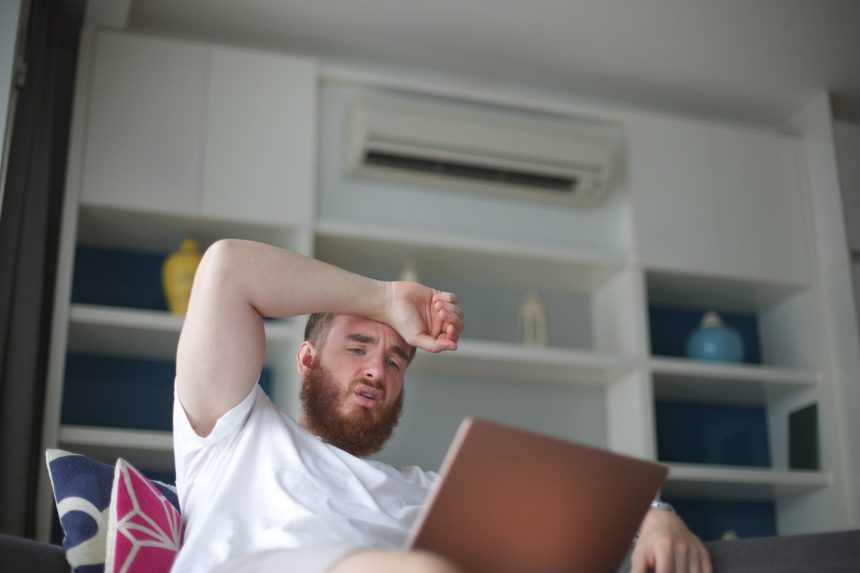With the effects of an El Nino summer being felt around the nation, everyday Aussies are now faced with the choice of forking out extra on their air-con bills or finding more cost-effective ways to keep cool.
Australian cities have witnessed the mercury hit record levels over summer, with metrologists predicting the hottest February in over a decade.
The message comes as the El Nino and Indian Ocean Dipole climate patterns coincide for the first time since 2015, with their impact driving hotter conditions across most parts of the country, making it ever more tempting to turn on that air con.
But just because we will be feeling the heat doesn’t mean our power bills have to also, with many Aussies already turning to inventive cooling methods to keep those energy costs down.
Build-it spoke to experts and members of the aircon cancelling community to discover their best tips for staying cool this summer without breaking the bank.
Heat shield your home
Shielding your home from heat can help keep it cooler by preventing it from being absorbed in the first place.
With 87 per cent of a home’s heat absorbed through its windows, adding sun shades, tinting, and installing blackout blinds are great ways to reflect the effects of the sun’s rays.
Dr Negin Nazarian, from the School of Built Environment at UNSW, is an expert in urban heat and told Build-it that cooling is more challenging once the home has already warmed up.
“On a hot sunny day, the winning strategy is to stop the heat from getting into your space,” he said.
“Any way that radiant heat from the sun can be prevented from being absorbed by surfaces or heating a space is key to keeping cool in the face of high temperatures.”
When choosing a home, check if it has insulating materials in the roof, flooring, and walls, which will help prevent heat transfer.
Also, ensure windows are double-glazed with a preference to face north over west to stop additional heat from penetrating the space.
Utilise natural ventilation
Another budget-friendly hack to hold back the heat is to promote better ventilation to push those hotter temperatures out of your home.
Take advantage of any cool breezes in the morning and evening by opening doors and windows on both sides of your home to create a cross-flow of cooler air.
Natural ventilation is one of the best heat mitigation strategies available, especially if you live near a water source like a pond, dam or lake.
Palm Beach resident Dustin Parker told Build-it that living near the ocean lets him cool his house quickly by opening up the east and west-facing doors and windows for a few hours every evening.
“It’s a great tip to avoid putting the air-con on if the air temperature has already begun to cool outside,” he said.
Bring back the fan
Until air conditioning became commonplace throughout most Aussie homes at the turn of the century, an archaic invention known as a fan was the most popular way to keep homes cool.
Energy efficient, compact, and practical, the tech’s rotating blades would displace warmer air throughout the home to create a cooling effect.
In the 1990s, 75 per cent of Aussie homeowners relied on fans as their best way to keep cool, with air conditioning only available in a quarter of residential properties.
And with studies showing fans can keep people cool in temperatures even as high as 40 degrees, what’s wrong with returning to the old and reliable?
Dr Nazarian says fans even have a significant advantage over air conditioning when paying those power bills.
“Air-conditioning is a very popular way to cool homes, but it also has some downsides in terms of the energy used to run it and the heat it creates,” he said.
“Indoor fans are relatively energy-efficient and make a room feel cooler by circulating air – much like ventilation does.”
Build a cooler garden
A garden makeover could help keep your home cooler.
Planting shade-giving trees can help reduce the heat your home absorbs, particularly if placed closer to windows.
Meanwhile, utilising natural grass ahead of fake turf surfaces and minimising the amount of concrete and paving can prevent heat absorption, which will create a heat island effect later in the day.
Queensland-based landscaper Zane Pearse told Build-it that having a backyard with grass surfaces or plants can feel noticeably cooler than ones without.
“Concrete is a heat magnet, so even when the outside temperature starts to drop in the evening the pavements and stone will be warming up your surroundings,” he said.
“A nice lawn, and some shady trees in and around windows, even a small water source can really help make the back yard feel a lot cooler come the afternoon.”
Home habits
Our everyday habits can also inadvertently induce heat, so making simple changes around the home can help cool us down during a heatwave.
Cooking outside if you can access a barbecue can ensure you are not adding extra heat to the home.
Meanwhile, wearing lighter, looser clothing can also ensure we keep our body temperature as low as possible.
Turning off heat-generating appliances when not in use is another way to keep a room slightly cooler, with computers and other electronics emitting a surprising amount of heat.
Lastly staying hydrated and cooling off with a cold shower or jump in the pool will also help bring down your body temperature when needed most.







